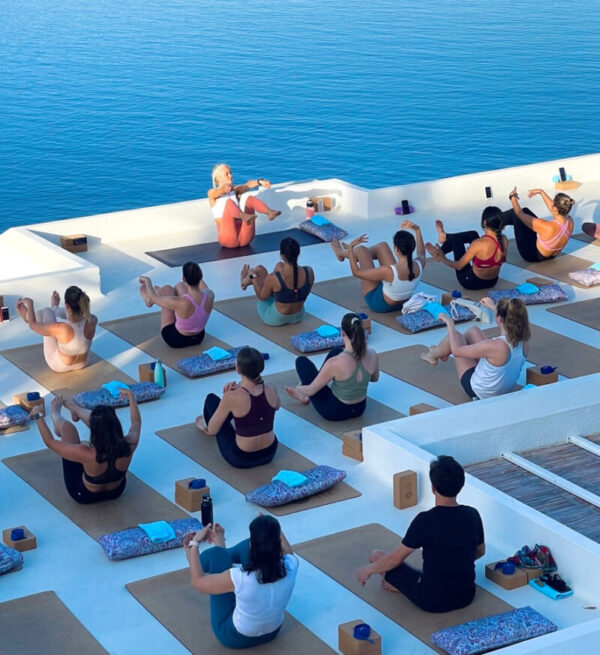Information



Learn how to sequence a balanced yoga asana practice.
Knowing how to sequence an asana class is important for many reasons, the main one being safety. There are some key aspects to always take in consideration to gradually take the body into the journey of HA THA – union of the dual energies, the feminine and masculine. Regardless if the class has a theme or not, balance between the two should always be a key priority. This means that we activate the sympathetic nervous system with the more dynamic and active asanas, and also cool down with more passive asanas, which focuses on the parasympathetic nervous system.
The following structure does not apply for yin and restorative yoga practices since they only focus on passive asanas.
Let’s look at some key aspects to take in consideration for creating an asana sequence.
It is useful to consider if the class will focus on a specific theme to understand the type of asanas to include more of. For example, if the theme is about the heart chakra, then the focus would probably be more on chest and shoulder opening followed by introspective asanas. If the theme is about strength and mental focus, perhaps there will be some Vinyasas, arm balances, plank etc.

Before we begin moving on the mat, it is essential to focus on our breath. The breath is the fuel to our physical existence; it moves the prana, the life force, so we need to come to a regular breathing cycle. This can be done in Sukhasana, taking a few deep breaths in and exhaling completely. Nadi Shodhana pranayama can also be practiced for grounding and creating balance between Ida and Pingala nadis, the left and right brain hemispheres. Most pranayama practices are suitable bring awareness to the breath and prana flow.
Regardless what style of asana practice we do, in my opinion, warming up the joints is super important. It can be a gentle and quick joint mobilisation focusing in the neck, shoulders, wrists and ankles to introduce slow and gentle movement to the joints.
In my opinion, sun salutations are very useful to include in most practices (exception being yin and restorative yoga). Surya Namaskar helps to warm up the body, regulates the breath and helps us become more focused. A specific number of rounds is not required, practice as many as you wish and fits within your time. Surya Namaskar can be considered a practice on its own as well.

As we dive into our practice, it is useful to create set a strong foundation with some of the standing asanas. These activate Muladhara, the root chakra which is the energy centre of balance. Many of the standing asanas also open the hips so they are ideal as they provide the perfect energetic combination of stability and flow.. Some of them, like the Virabhadrasanas, also activate Manipura chakra (solar plexus) so they can help to further focus the mind and develop a sense of will-power and self-belief.
A very important aspect to consider is that before we start any back-bending asanas, we must first do the ground work. We need to be steady on our feet and open in the hips. Only then naturally the upper body will open. Back-bending requires openness of the hips because both the hip flexors and extensors attach to or influence the lower back movement. So it makes sense to gradually start from the bottom and make our way up.
These are extremely important because they bring the body back into balance. For example, when we practice a backbend, this should be followed by a forward fold asana for flexion and stretch or the spine, to bring it back into a neutral state. Spinal twists are also useful here. If we practice an inversion, then it is natural it should be followed with an introspective resting asana such as Balasana (child’s pose) to allow the body and nervous system to come into its neutral, balanced state.

Although many asanas used throughout a practice are considered inversions (Uttanasana, Prasarita Padottanasana etc), the more dynamic ones such as Sarvangasana, Sirsasana, Pincha Mayurasana, Adho Mukha Vrksasana are to be done at the end of the sequence. They reverse the blood and prana flow which is a lot for the body and the nervous system. They also require more energy and effort for the body, so practicing these before Savasana is suitable. Although they energise the mind (exception being Sarvangasana which calms the mind) through the reverse of blood and prana flow, afterwards we need to rest to allow the parasympathetic nervous system to be active so that resting can occur. Is it a must to include the dynamic inversions? No, especially if you are not comfortable with teaching them or practicing them without a teacher. As mentioned, many asanas we practice are inversions meaning the head is below the heart, so this can be sufficient.
Finally, the moment of relaxation begins. I mention this often and in my opinion, Savasana should always be practiced at the end of a class and never to be skipped. This is so important because in Savasana, the parasympathetic nervous system is activated, allowing us to rest, for the mind and body to feel calm, for the digestive process to work, for the breath to be regulated etc. I was always taught by one of my teachers that one should never walk out of an asana class hyped up. This is not a balanced state. So Savasana is like the master of the practice, where the true wisdom begins and all teachings of the class are revealed.